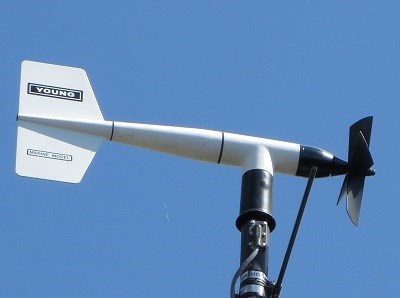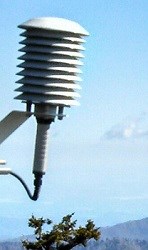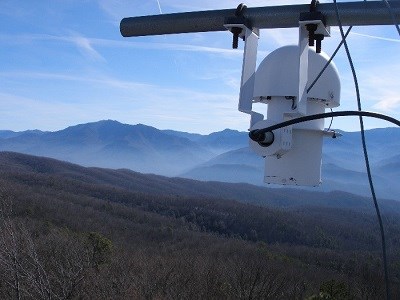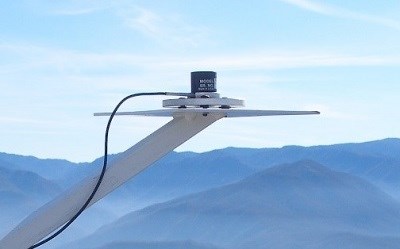|
Visit our keyboard shortcuts docs for details
An air quality scientist describes meteorology monitoring and connections to air quality. Video courtesy of Mackenzie Reed/NPS Meteorology is the study of atmospheric conditions that can affect our weather. Wind speed and direction, temperature, solar radiation, and humidity can all provide important information about how pollutants move and react in the atmosphere. Most air quality monitoring sites also monitor meteorology. Meteorological measurements are essential for air quality data analyses and are used in atmospheric modeling to determine how different pollutants move in the atmosphere and where they come from. Who is monitoring and where?NPS staff and partners monitor meteorology and maintain meteorology monitoring equipment almost everywhere that we monitor air quality. Take a look at the NPS air quality monitoring map to see where these sites are located. What equipment do we use and how does it work?Most meteorological monitoring instruments are located at the top of tall towers at the monitoring sites. Wind speed and direction, solar radiation, relative humidity and temperature are the most important aspects of meteorology for air quality. 
Wind speed and directionWind speed and direction are often measured by a vane anemometer. A vane anemometer (shown on the right), is made up of a fan and a tail. The tail allows the wind to spin the anemometer on its axis into a position parallel to the wind. It does this while the fan is propelled by the wind. The number of revolutions per minute (rpm) of the fan is recorded by an electronic system, which converts these rpm’s into wind speed. The electronic system also records the direction that the tail is facing to give the cardinal direction (north, south, east, west) that the wind is coming from. Wind speed can tell us how fast and far pollutants have traveled from their source. Wind direction tells us about where the pollutants have been transported from. Relative Humidity
Relative humidity is measured using a hygrometer. The hygrometer (shown on the left) works by using the principles of capacitance. The capacitance, or stored charge, of a polymer inside the hygrometer changes in proportion to the relative humidity of the surrounding air. A sensor detects the changes in capacitance and converts the measurement into percent humidity. Relative humidity is important to document because it informs models that estimate visibility conditions. Additionally, we use relative humidity to study natural fluctuations in ozone, like stratospheric intrusions, and to provide insight on air mass transport.

TemperatureMost monitoring stations use digital thermometers (shown on the right) to measure the air temperature. Unlike the mercury thermometers that we generally think of, digital thermometers use electrical resistance to measure temperature. Inside a digital thermometer, the electrical resistance of a type of a resistor (called a thermistor) changes with the temperature of the surrounding air. When the temperature increases, the resistance in the thermistor decreases. This change in electrical resistance is detected by a small computing system inside the thermometer, which converts the resistance values into degrees (Celsius or Fahrenheit). At our monitoring stations, this temperature sensor is in a sheltered housing that prevents solar radiation from affecting the temperature readings, and a small fan pulls the air across the sensor in order to get a measurement of the current air temperature. Solar Radiation
Solar radiation is measured using a photovoltaic detector (shown on the left). The detector works by converting light energy into measurable electric current. There are two bands inside the detector, a valence and conductor band. When enough light energy hits the valence band, electrons are excited and jump to the conductor band. The conductor band is connected to a circuit and a sensor that measures the amount of energy produced from the solar radiation in watts per square meter (W/m2). Temperature and solar radiation measurements are used to determine how pollutants may react in the atmosphere. For example, the reactions of volatile organic compounds and nitrogen oxides to form ozone, called photochemical reactions, depend on the presence of sunlight. Monitoring for temperature and solar radiation helps us understand the ozone distributions at a site and also aids in predicting when ground-level ozone might rise. Air quality monitoringAll meteorological parameters that we measure are also used for the development of air quality models. Models like the Community Multiscale Air Quality Modeling System (CMAQ) use meteorology and deposition measurements from across the country, along with atmospheric modeling and computing techniques to develop estimated deposition maps for ozone, particulates, toxics, nitrogen and sulfur. These deposition maps can be used to identify areas at risk for damage to human and environmental health as well as for deposition research. |
Last updated: August 7, 2025
